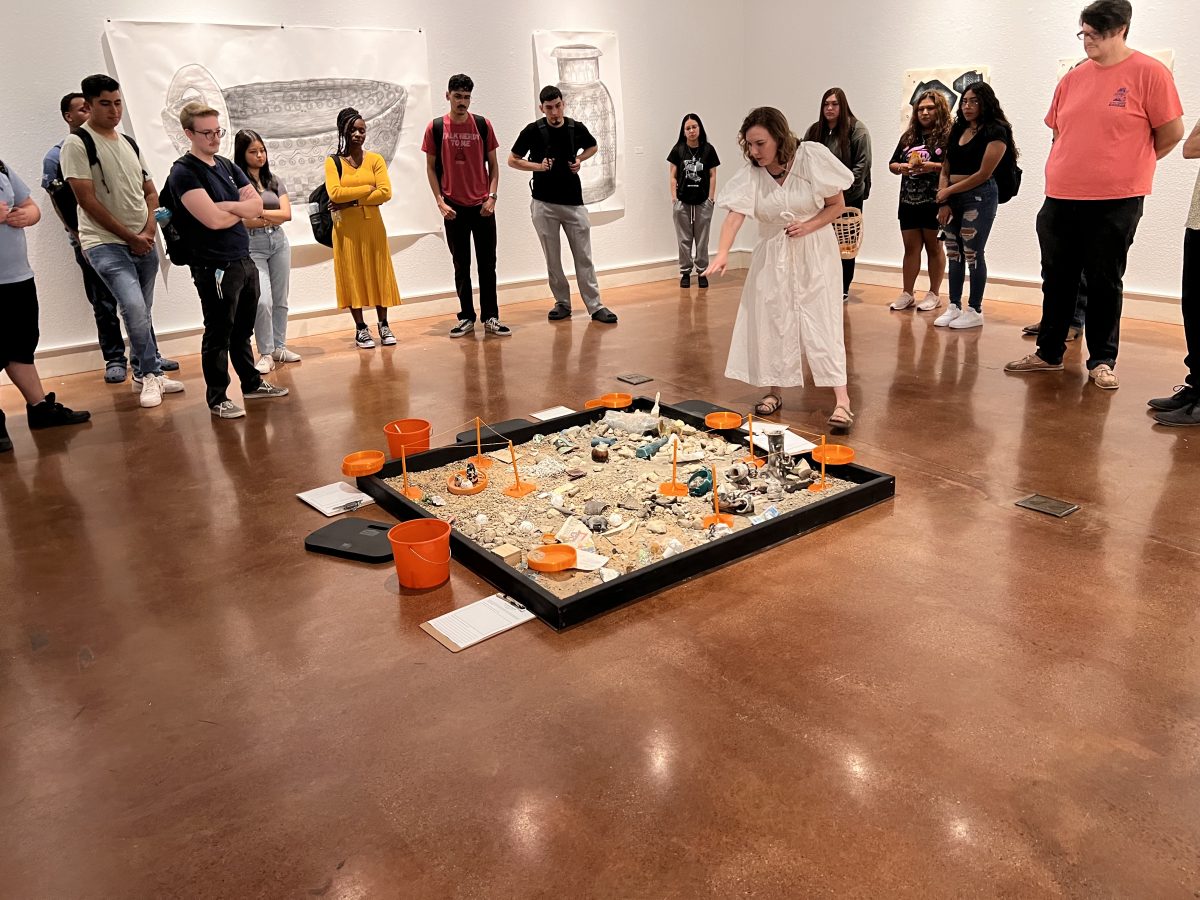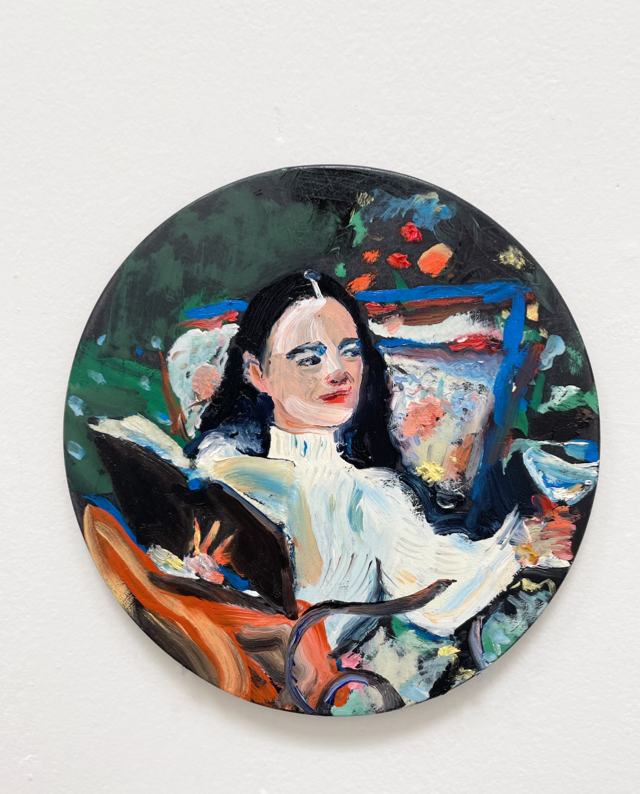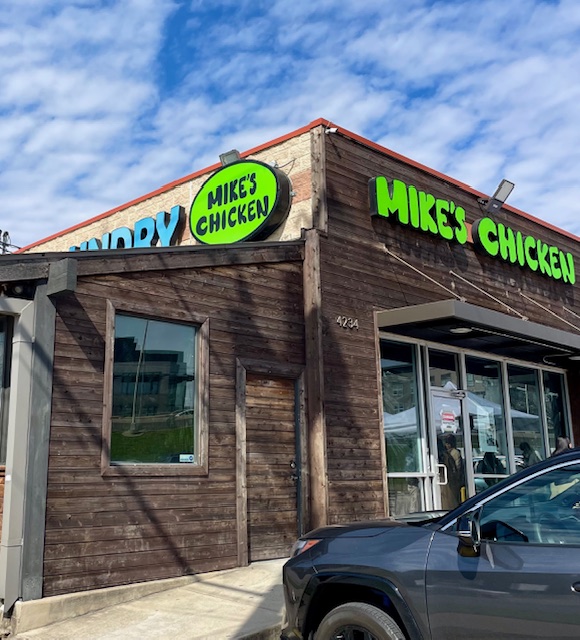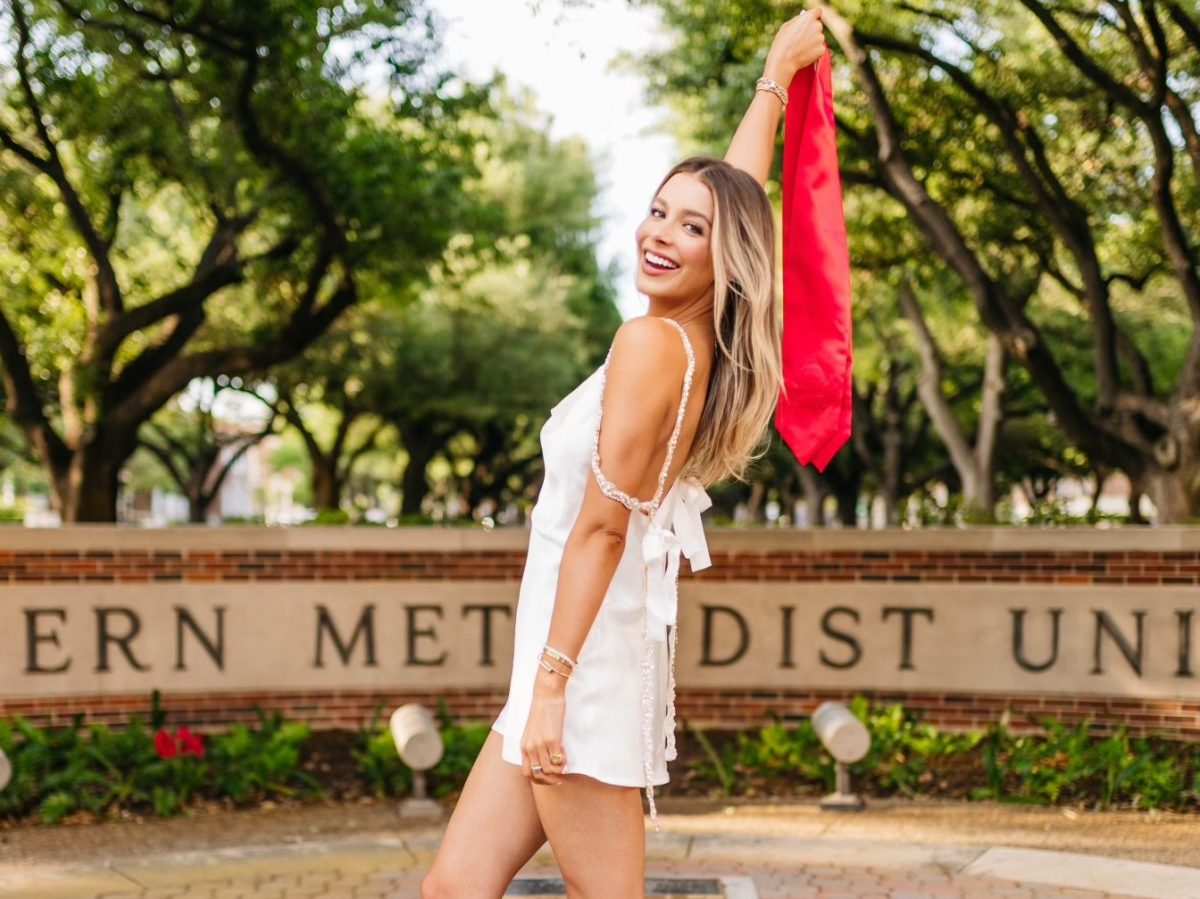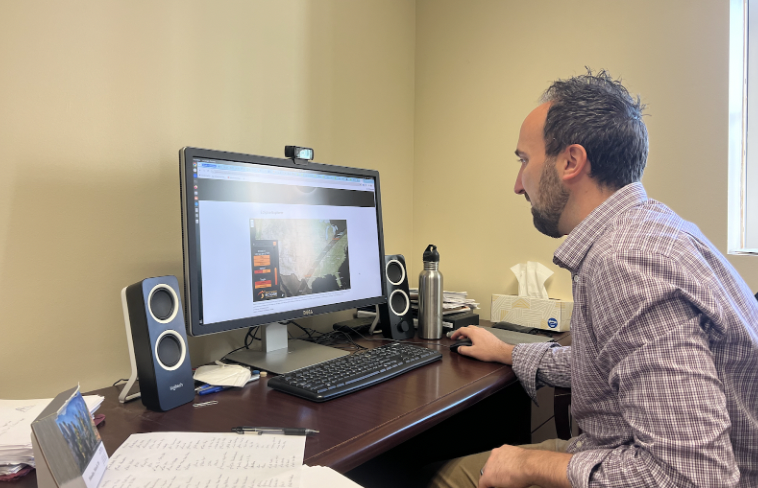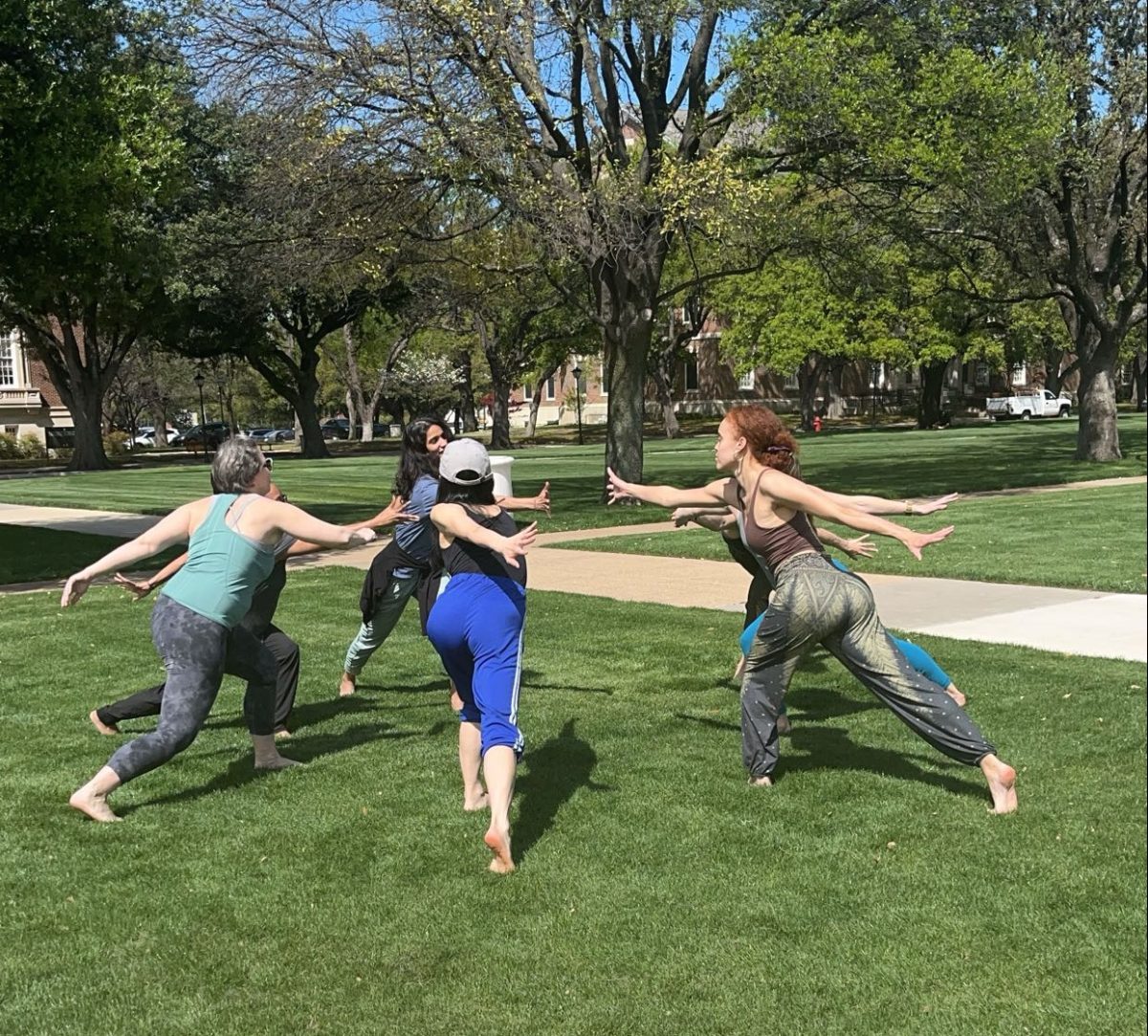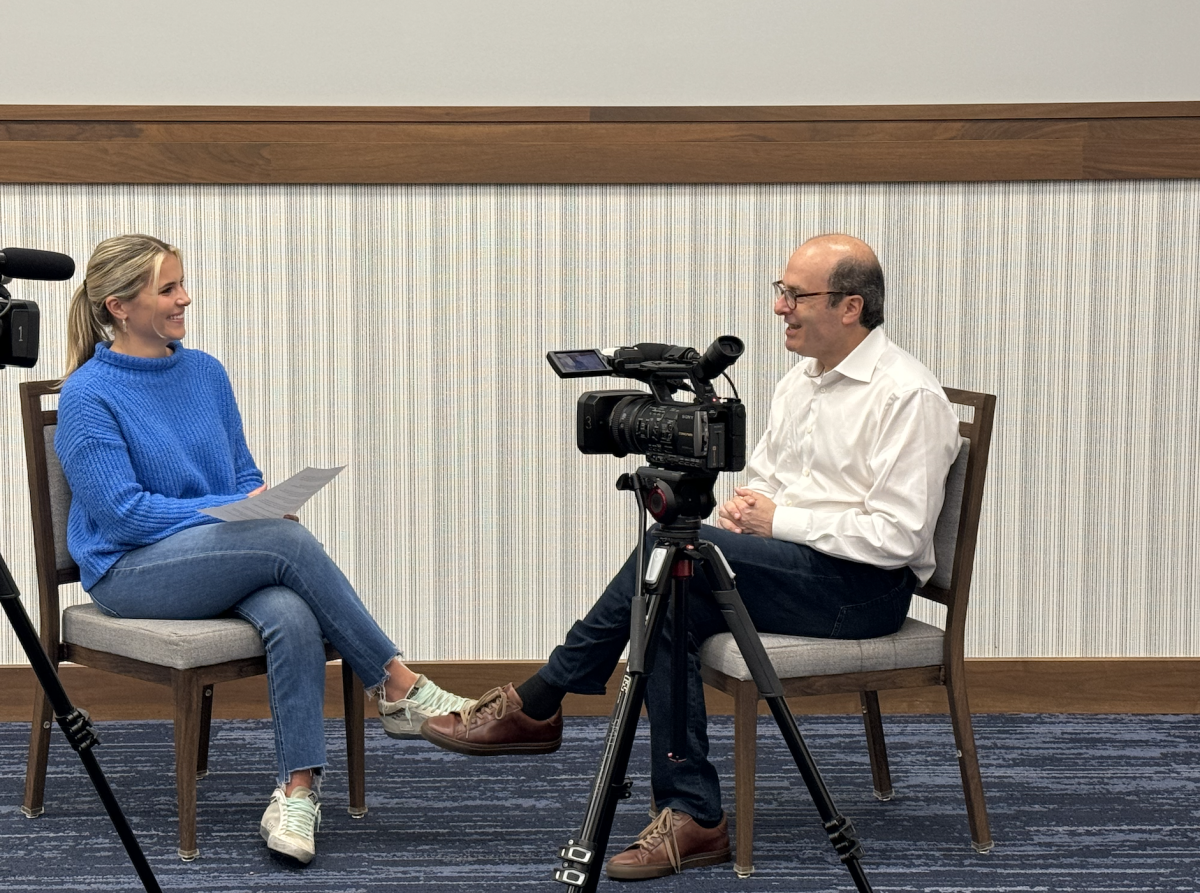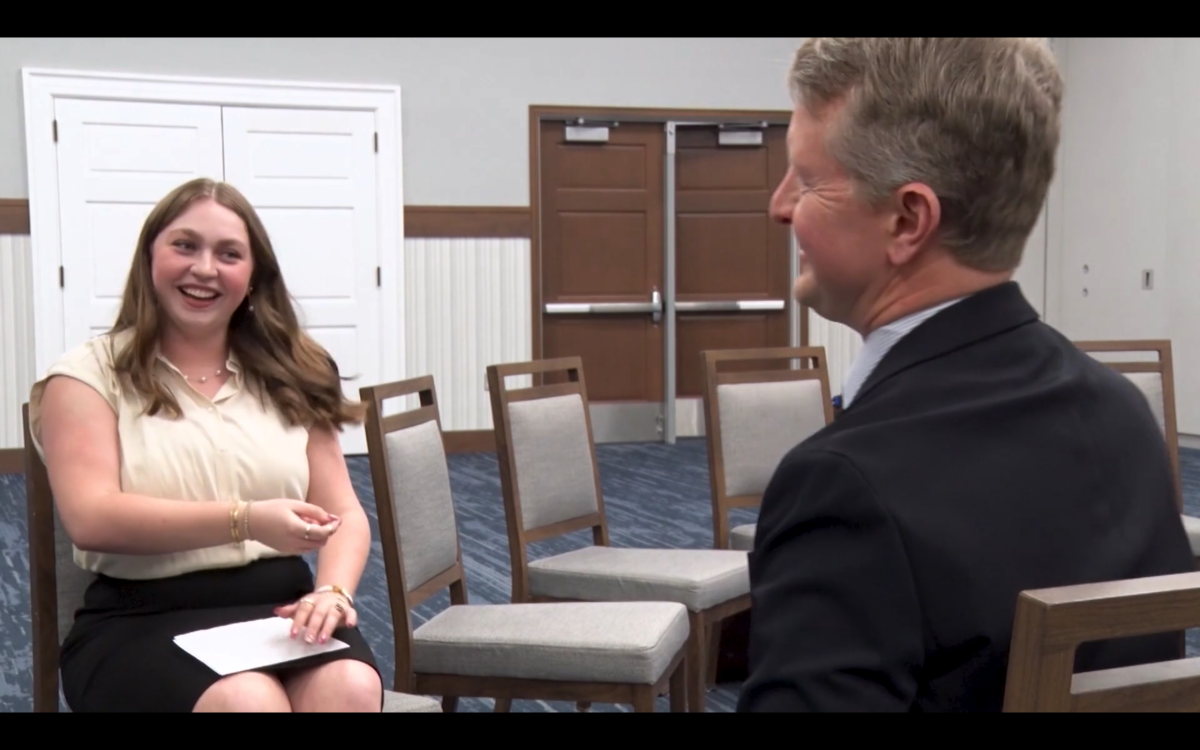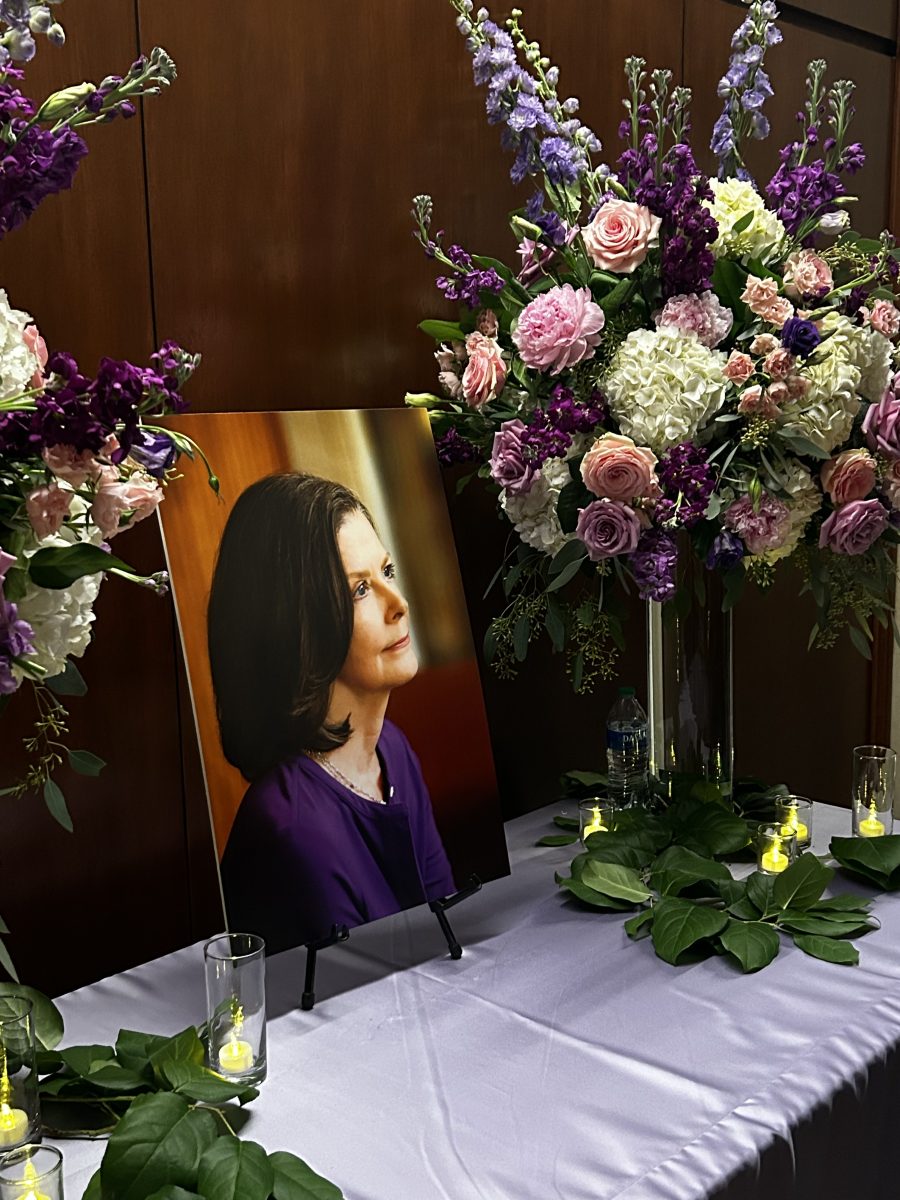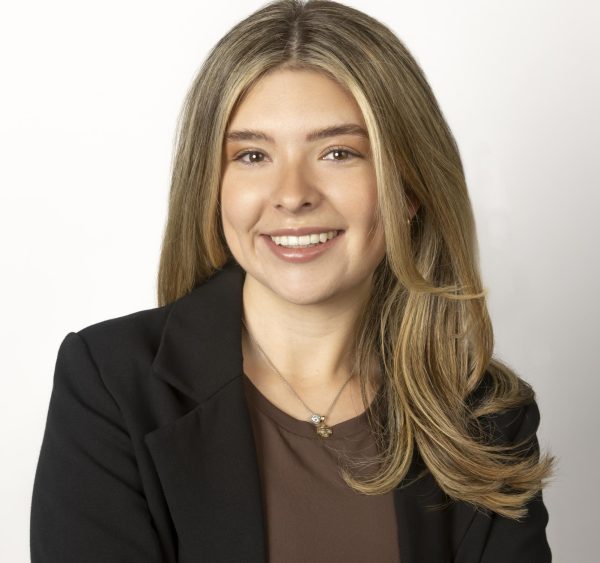Attendees stroll through the Carillon Gallery at Tarrant County College in Fort Worth, Texas, and admire the black and gray collagraph prints of ancient Mediterranean geometric pottery. Crunching into a ball, people try to fit into the life-sized funerary vases.
Students begin sifting through a man-made excavation site with 3D-printed trays. The dig site consists of small artifacts and trinkets such as acrylic sheets in the shape of old Cypriot pots made with graphite and oil paint in pops of pink and green. These are the works of Cat Rigdon, a Dallas-based artist who brings new life to archaeological finds using modern mediums such as pop art.
“It’s great to be back on a college campus after ten years,” Rigdon said.
Rigdon was destined to be an artist. Her mother pushed the arts into Rigdon’s routine as a young child. Ballet and opera were never her strong suits, however, visual arts simply came naturally, Rigdon said.
“When my mother was pregnant with me she was really into pre-raphaelite artists and so she wanted me to become an artist,” Rigdon said.
Rigdon moved from the United States to the island of Cyprus with her family when she was 5 years old. During her time in Cyprus, she was immersed in a “hodge-podge” of different cultures of people who fled to the small Mediterranean island. Russians, Syrians, and Lebanese found Cyprus as a refuge from civil wars.
Like many artists, Rigdon was at an odd point in her artistic journey. She struggled to find her creative vision. After a visit to the British Museum a few years ago, Rigdon was particularly drawn to the archeological finds of Enkomi, a dig site located in the Northern region of Cyprus. Due to the strong Turkish militarized zone, the people of the Southern Greek region of Cyprus were not allowed to cross the border, stopping Rigdon from ever visiting the site.
“I was never able to visit the dig site, but I happened upon a lot of the artifacts from it…it was so exciting to see its fresh material,” Rigdon said.
After being in awe of the best pieces from the Enkomi dig site, the gears were finally turning, Rigdon said. Rigdon focused her skills on abstract fossilized remains of urchins, however, this work did not resonate with her or her audience. Rigdon knew she wanted to incorporate her upbringing in Cyprus into her work.
“Something clicked when I saw these artifacts. This is the story that I’ve been trying to tell. Bringing the historical components of Cyprus to the forefront… I want more people to know about it and to know about the culture,” Rigdon said.
Rigdon knew in order to create new life with such old findings, she had to incorporate her own color palette, which consists of vibrant pinks, blues, greens, and more.
“More exciting, more peppy colors,” Rigdon said.
Using funerary vases, Rigdon brings life to grave markers of the past using her spirited color scheme.
Brooke Chaney is a fellow artist who works alongside Rigdon in the same artist collective.
“There’s this conceptual nature to her work, but also this levity with the pop art features and she’s very playful with those ideas and it’s more about celebrating the death and not necessarily fearing it”, Chaney said regarding Rigdon’s playful funerary vessels.
Attendees are tasked with an assignment to draw and describe artifacts found in her man-made dig site, which Rigdon will collect and publish.
“It’s archeology… but make it fun,” Rigdon said.







